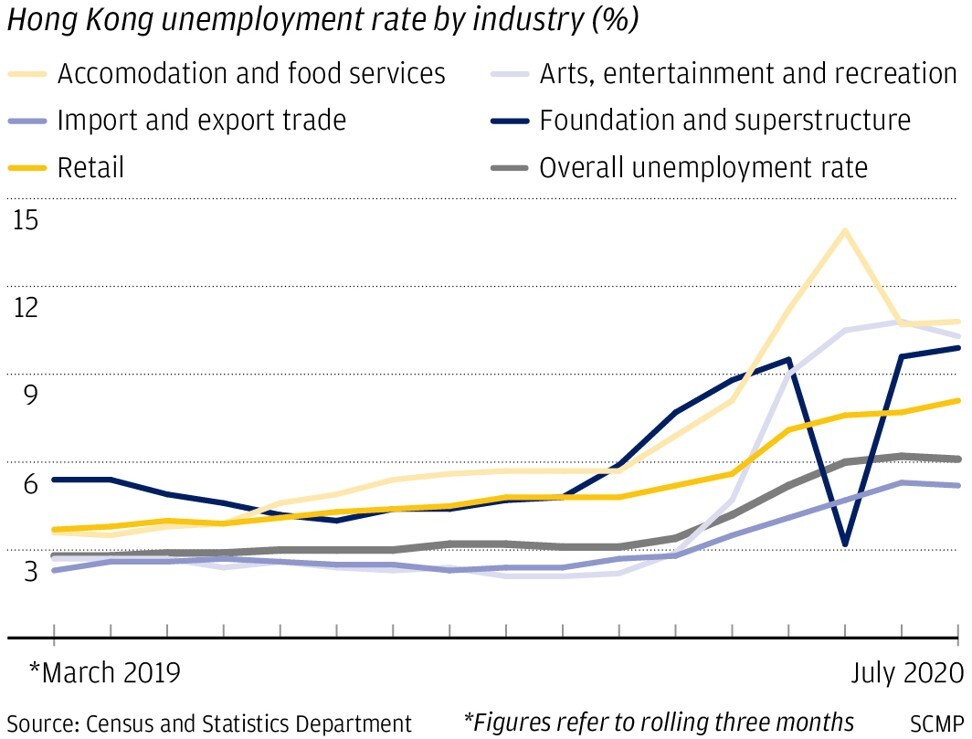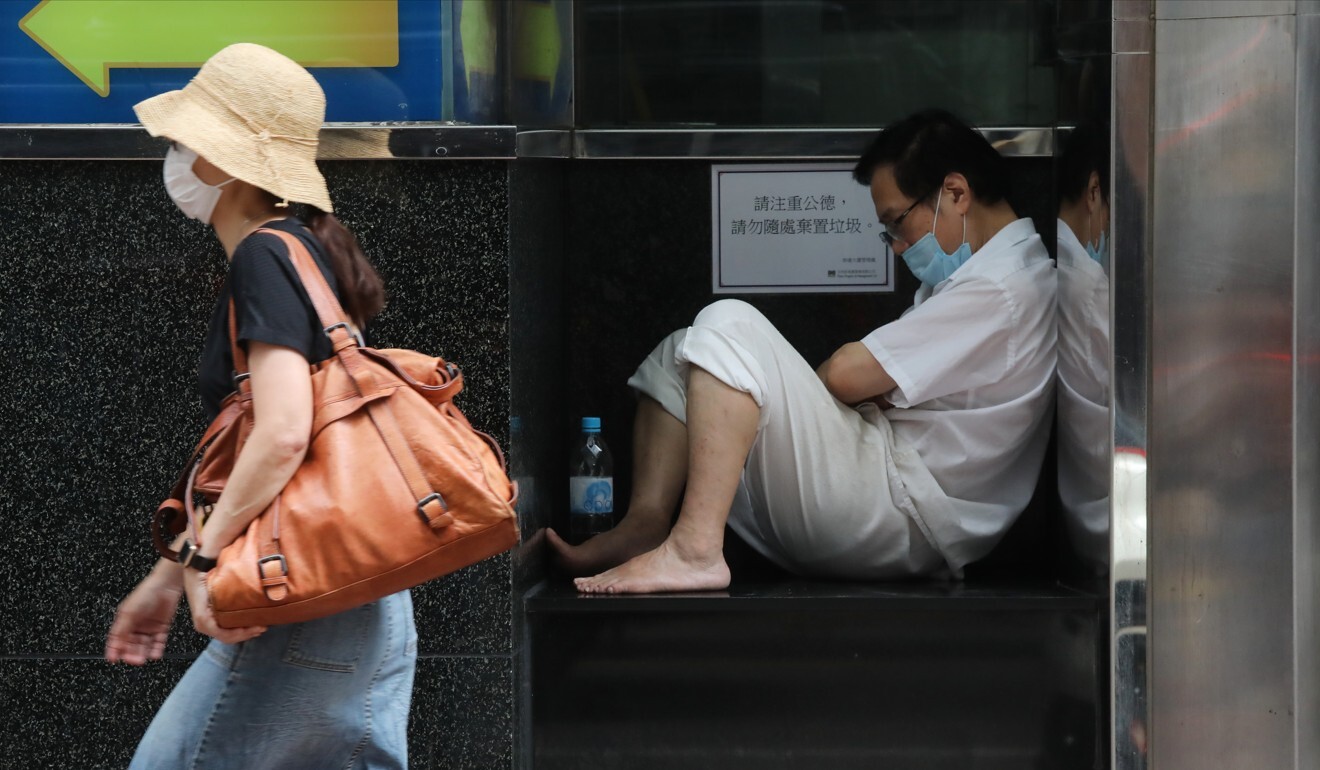
Hong Kong jobless rate dips slightly to 6.1 per cent but experts say worst not yet over
- Unemployment rate had risen for nine straight months as the recession continued to deepen
- Labour market is expected to remain under significant pressure in the near term, welfare chief Law Chi-kwong says
In the rolling three-month period between May and July, the unemployment rate stood at 6.1 per cent, compared with 6.2 per cent for April to June, the Census and Statistics Department revealed on Wednesday.
Despite the slight fall, the jobless rate, however, remains at a more than 15-year high.
Secretary for Labour and Welfare Dr Law Chi-kwong warned that the labour market would remain under significant pressure in the near term.

04:53
Jobless struggle to make ends meet in Hong Kong as city battles coronavirus and recession
“The recent surges in infected cases both worldwide and locally have further clouded Hong Kong’s economic outlook for the rest of the year,” he said.
“To preserve the vitality of the economy, the government has rolled out relief measures of unprecedented scale, including a series of measures on job retention and job creation, which help keep workers in employment.”
Between May and July, total employment increased by around 16,600 to 3.63 million while 1,800 more people were out of work, taking the total to 242,500.
Hong Kong returned to near total lockdown mode in early July because of a third wave of Covid-19 infections.
Stamp duty boosts Hong Kong income, offsetting impact of US sanctions, Covid-19
Industries such as food and beverage, retail, hotel and hospitality have been hard hit by the tightened social-distancing rules which limit public gatherings to two people and ban restaurant dine-in services from 6pm to 5am.
Hong Kong General Chamber of Commerce CEO George Leung Siu-kay said without the government’s HK$81 billion subsidy scheme, the unemployment rate could have shot up to more than 8 per cent.
“The latest unemployment situation remains worrisome despite it stalling for the second month at the current level,” he said.
“However, we believe that striking a balance between stricter controls on social activities and relaunching the economy is essential, because fiscal support is neither an ideal nor sustainable solution. Local businesses are expected to close down in number exponentially over the next three to four months if they are unable to do business.”

Bank of East Asia chief economist Paul Tang Sai-on said the slight improvement in the jobless rate did not point to any positive outlook. “I have not seen any light in the tunnel,” he said.
Tang said Hong Kong and countries such as New Zealand had a new wave of coronavirus cases, which disrupted economic recovery.
He called on companies to hammer out alternative plans to generate business with tourists not expected to return for some time amid the global restrictions on travel.
“Business operators need to find solutions such as digitalisation to the new normal,” Tang said, citing the unlikelihood of social-distancing rules and lockdowns going away any time soon in the city and around the world.
Tang aimed to revise his forecast for this year’s unemployment rate of 6.2 per cent to a higher figure despite the small improvement.
In the May-July period, the unemployment rate in the food and beverage sector was the highest among industries, at 14.6 per cent – near the post-severe acute respiratory syndrome (Sars) high – slightly down from 14.7 per cent between April and June.
The construction sector was the second worst hit, with unemployment at 11.3 per cent at the end-July period – the peak since the aftermath of the global financial crisis in 2008 – up from 11.2 per cent in the previous rolling three months.

Joblessness in consumption- and tourism-related sectors, which consist of retail, accommodation and food services, edged up to 10.8 per cent – the highest since Sars – from 10.7 per cent.
Sectors where the situation improved included information and communications, professional and business services and education.
Kathy Teng Lam, 49, who had been looking for a full-time job after being laid off in April as a customer service officer with a cosmetics firm, still could not find work in the past three months.
“The job market is very tough, I can’t even find a part-time job,” she said.
Financial aid from the government to save jobs was via an HK$81 billion six-month wage subsidy plan known as the Employment Support Scheme. During the June-August period, about 140,000 companies secured HK$43.9 billion, or 54 per cent, of the subsidy.
About 1.9 million employees, or half of the working population, were subsidised by HK$23,000 on average per person during the three-month period.
Hong Kong’s economy remained in dire straits, with gross domestic product tumbling 9 per cent in the second quarter from a year earlier after a 9.1 per cent contraction in the first three months – the sharpest decline for a single quarter since records began in 1974.

